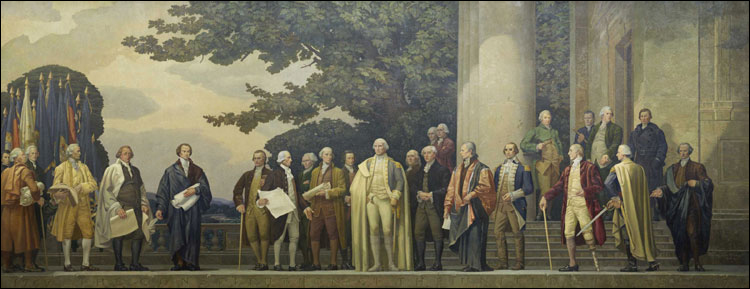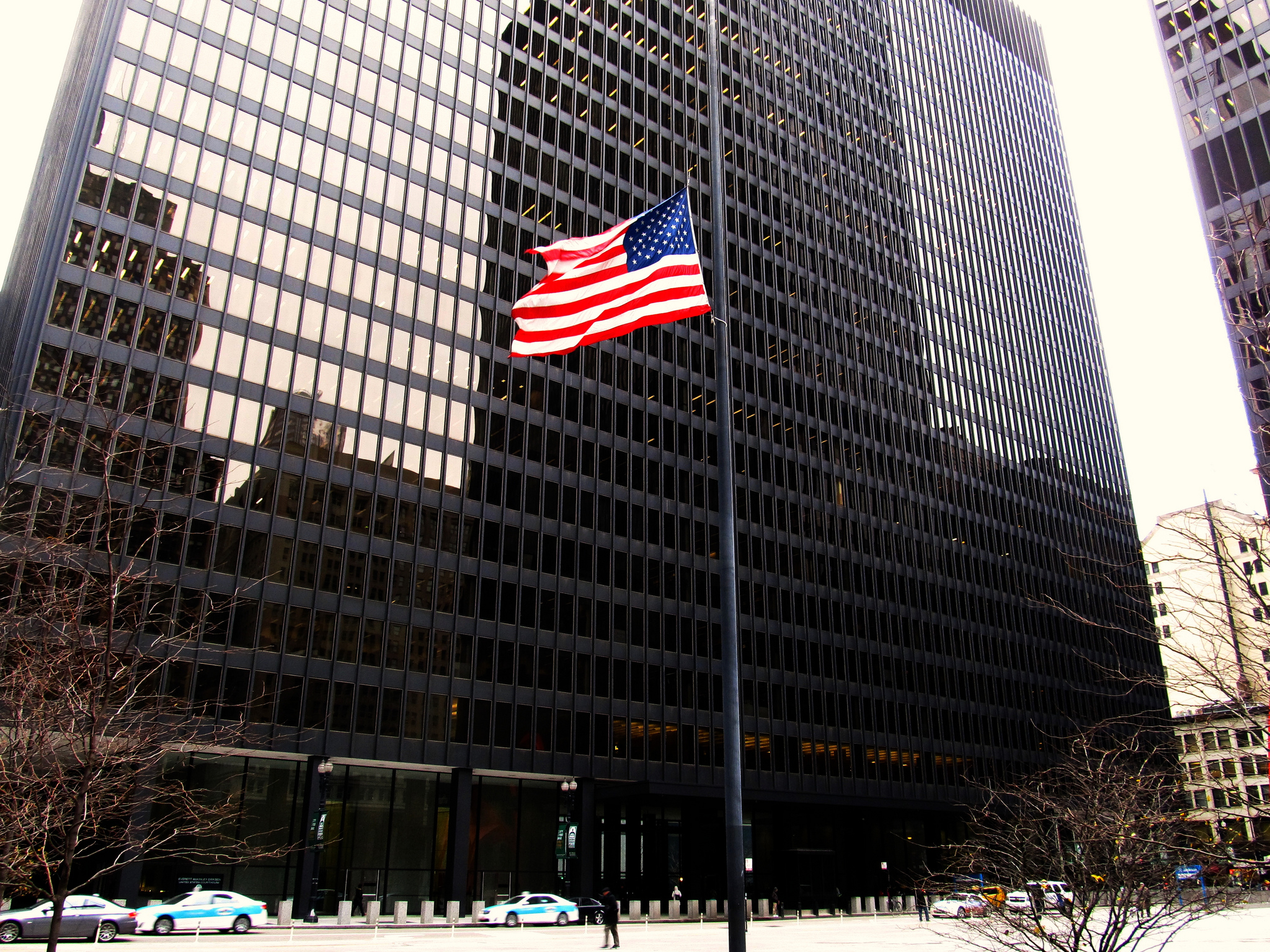
The Constitution (1936), mural by Barry Faulkner, housed in the Rotunda for the Charters of Freedom at the National Archives Building in Washington, D.C.
This post is presented in recognition of Constitution Day, which was established to commemorate the creation of the US Constitution in 1787.
In his famous opinion in McCulloch v. Maryland (1819), Chief Justice John Marshall proclaimed, in what would become one of his most quoted lines, that “we must never forget that it is a constitution we are expounding.” By this he meant to emphasize that the words contained in the Constitution are different from words in other legal texts, and that they should be treated differently. To make this point, Marshall offered a description of the essential characteristics of our Constitution.
He started by emphasizing what a written Constitution was not. A Constitution cannot be exhaustive, he noted. It cannot be expected to “contain an accurate detail of all the subdivisions of which its great powers will admit, and of all the means by which they may be carried into execution.” For if it contained such minute details, it “would partake of the prolixity of a legal code.” The Constitution, in Marshall’s rendering, is not law, or at least not law in the way a “legal code” is law.
If a Constitution is to be considered law, it is a particular kind of law, one that operates at a higher level of generality. “Its nature,” he explained, “requires that only its great outlines should be marked, its important objects designated, and the minor ingredients which compose those objects be deduced from the nature of the objects themselves.” The Constitution, then, is uniquely demanding upon its audience. Its meaning is rarely self-evident. To produce meaning from the text requires work, the deduction of particulars from principles.
Another essential characteristic of the Constitution, Marshall noted, is that it be accessible. He explained that the reason the Constitution cannot be overly detailed is because such a document “could scarcely be embraced by the human mind. It would probably never be understood by the public.”

So here we have the core of Marshall’s case for what makes the Constitution distinctive: it cannot be overly burdened by legalistic details, and it must be understood by the general public.
One might extrapolate from these essential characteristics of the Constitution to make the case for why we, the American people—and not just judges or trained lawyers—have a special responsibility to engage with our founding document. Lawyers are trained to parse intricate legal texts. This is precisely what Marshall explained the Constitution was not. The Constitution is permeated with general language, and it is not clear that the work that it takes to give operational meaning to these generalities—the deduction of the elements of a working democratic government—is particularly lawyers’ work. Rather, with his emphasis on the need for a publicly accessible document, Marshall indicated that this work of constitutional interpretation is the responsibility of the American citizenry and their elected representatives.
And yet, in his other equally famous opinion, Marbury v. Madison (1803), Marshall took a distinctly different approach to describing the essential nature of the Constitution. For here, in his seminal argument explaining the necessity of judicial review, he made the case for why judges are particularly suited to the demands of constitutional interpretation.
Whereas Marshall’s argument in McCulloch differentiated ordinary law (statutes) from constitutional text based on the latter’s generality and accessibility, in Marbury he treated both as forms of law. One, the Constitution, was “a superior paramount law, unchangeable by ordinary means,” but they were both first and foremost legal texts. It was from this premise that he arrived at his memorable declaration: “It is emphatically the province and duty of the judicial department to say what the law is.” He continued: “Those who apply the rule to particular cases must of necessity expound and interpret that rule. If two laws conflict with each other, the courts must decide on the operation of each.”
Here, Marshall describes the Constitution as establishing a “rule,” to be followed by public officials. The task is not the deduction of details from the Constitution’s generalities. It is not something that calls upon the responsibilities of the American people. Rather, it is a legalistic task. It is lawyers’ work.
In these two canonical John Marshall decisions, we can see two approaches to the Constitution. We have, in effect, two distinct answers to the most fundamental of questions: what is the Constitution? One approach emphasizes the way constitutional language differs from ordinary legal language. This portrait of the Constitution provides a justification for why the American people have a special responsibility to engage in the hard work of giving meaning to the text’s “great outlines.” The other approach emphasizes the legalistic characteristics of the Constitution. It emphasizes the ways in which the act of constitutional interpretation is basically a lawyer’s task. And therefore this work is the special responsibility of the courts.

This fundamental divide remains very much with us to this day. When we as a nation celebrate Constitution Day, we assume there is value in citizens engaging directly with the Constitution. We call for people to go the text of the document, to read it for themselves. We celebrate ordinary people studying the Constitution, taking ownership of the document, giving it meaning and vitality.
At the same time, we as a nation have come to accept the courts as the special guardians of the Constitution. Even the most controversial of Supreme Court decisions—the recent ruling on the health care law, for example—are generally accepted as establishing a definitive reading of the Constitution’s meaning. Court rulings alone never end constitutional debate, but, in most cases, they stand above all other claims on constitutional meaning.
We thus live in a modern constitutional world that reflects both of Marshall’s answers to the question: what is the Constitution? The Constitution is not just law. It is a distinctly public document, carrying with it special public responsibilities. But it is also a legal document, thus carrying with it special judicial responsibilities. And in this tension lies much of the vitality of American constitutionalism.





Leave a Reply